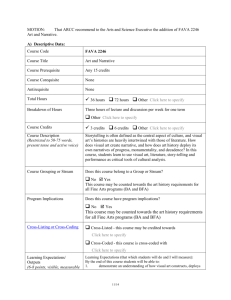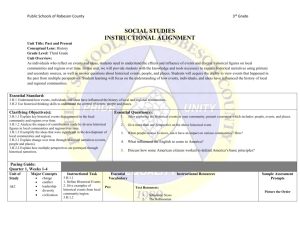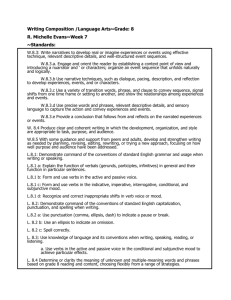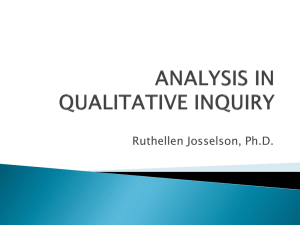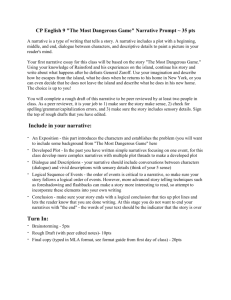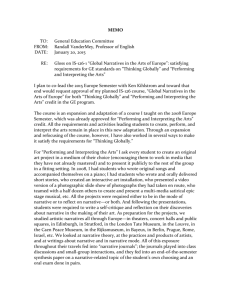Narrative and Case Study
advertisement
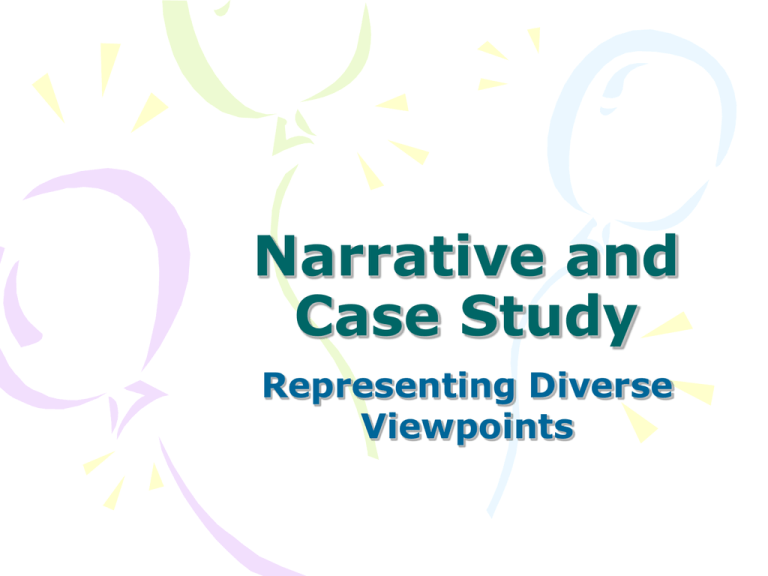
Narrative and Case Study Representing Diverse Viewpoints Narrative Approaches are based on several assumptions: • Individuals organize their experiences and their interactions with individuals, groups, and culture into narratives or stories. • Narratives depends on the individual’s past and present experiences, values, the audience, and where the narrative is told. • Narratives can be presented in multiple voices or perspectives. • Narratives tell us how people assign meaning to their experiences. • This process is similar to story-telling. In narrative, • A person’s experiences and his/her narrative changes over time and as the person develops. • Narratives also change as people interact with different individuals and groups and as the surrounding culture and political/social/environment changes. • In addition to being personal stories, the stories also reflect the cultural experiences and social context – so consequently may represent members of specific cultural or demographic groups. (i.e. multiple voices). Narrative Research is: • Conducted through dialogue between the researcher and the participant. • Data can include field notes, journals, interview, observation, documentation of story-telling, letters, videos, audio-recordings, songs, photographs and other documents. According to Denzin (1989): Narratives are fictional statements that, to a varying degree, are about real lived lives (as cited in Moen, 2006). What to look for in narratives: • Patterns or themes in the individual’s life. • The importance of cultural symbols and meaning attached to those symbols. • The way in which the subject looks at him/herself and others. • The importance of the cultural and social context and how that context changes over time and how these changes affect the individual. Thoroughly Post-modern Mary (narrative example) http://video.google.com/videoplay?doc id=8787892531902504910&q=narra tive+research&total=108&start=10& num=10&so=0&type=search&plinde x=1&hl=en Questions of trustworthiness (has subject told the “truth”) • Prolonged engagement and persistent observation enhances the quality and of the narrative. • Learning the culture and establishing trust often increases the trustworthiness of the data. • Triangulation – using multiple data sources. • Negative case analysis – trying to disconfirm the data already collected. • Member checking – asking participant if interpretation is accurate and making adjustments in the data and interpretation if necessary. • Thick description (use details that include information on setting; context; researcher’s reactions) Use in Social Work • Narrative therapy (participant describes his/her own story to therapist). Therapist identifies common patterns or themes. Helps respondent develop strategies for changing behaviors that reoccur or that cause problems for the participant). • Development of cultural understanding or knowledge about demographic groups that the practitioner is likely to work with. Understanding of historical events or situations that have affected groups of people. Provide information about social/cultural context, coping strategies, and behaviors. Programs, policies, and service needs are identified. (For example, interviews with Katrina survivors). Case Studies • Used to understand specific organizations, groups or communities. • Used to understand the process of implementing an intervention or the effect of an intervention on an individual, group, organization, community, etc. • Used to understand a specific situation and/or practice method used in that situation. In social work, case studies are conducted. • By outside investigators interested in the subject, setting, or situation. • By researchers who have been involved in working with community groups or organizations to set up a program or intervention. • By people who conduct systematic investigations of research or projects that they have participated in themselves. • A practitioner who describes how an intervention with an individual client was implemented and the results. Case studies are: • Not equivalent (in terms of external and internal validity; scientific proof) of hypothesis testing of interventions. • They do allow for examination of the context in which interventions take place and help us understand why an intervention does or not work. • They help us understand how the worker applies “tacit” or experiential knowledge to a practice situation. • They may provide clues as to the types of interventions that work in certain situations. • They are sometimes used to provide/disseminate knowledge to other practitioners. Data Collection includes: • Extensive observations • Multiple interviews with a variety of different participants and conducted from multiple viewpoints. • Document analysis (reports, case records, videos, photos, etc. Trustworthiness is established through: • Systematic application of data collection methods. • Peer or supervisory review. • Prolonged engagement. • Triangulation. • Member checking. • Stating biases or “degree of participation” of the researcher “up front.” • Thick description (use details that include information on setting; context; researcher’s reactions) Essentially, case studies • Tell the story of a situation or intervention from the outside researcher’s point of view using multiple methods and perspectives. • Tell the story of the person or group experiencing the situation or implementing the intervention. http://video.google.com/videoplay?docid=8 279368921233271479&q=case+study&tot al=4441&start=20&num=10&so=0&type= search&plindex=4&hl=en


